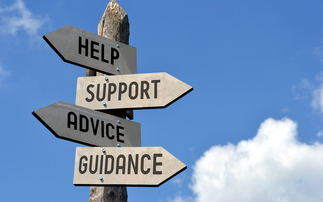With risk equalisation likely to become a reality in the Irishhealthcare market, Peter Madigan looks at the how thebattle is shaping up for providers involved
After eight years of increased NHS investment with little visible improvement, ministers are beginning to question whether a more imaginative model is needed to meet the healthcare needs of Britain in the 21st century.
Although it would take a brave politician to suggest restricting access to free healthcare and forging closer links with the private sector, a system based on this model has been in operation in Ireland for over 40 years.
Currently, 49% of the Irish population have health insurance.
For the most part, this figure has been achieved by restricting free healthcare through a medical card system.
Medical card holders are entitled to free hospital care, prescription drugs and GP visits, but currently just 30% of the Irish population have them, hence the popularity of health insurance.
As opposed to the British risk rating model, the Irish system is based on community rating, which means that regardless of the age, sex or health status of one subscriber, all policyholders pay the same premium, with the risk shared equally through the community rather than in relation to the health of individuals.
Community rating is enshrined in law and has been central to the Irish healthcare ethos since the current system was introduced in 1957, with the launch of the Voluntary Health Insurance Board (Vhi).
Up until 1994, Vhi had a monopoly in the Irish market but the introduction of the EU Third Non-Life Insurance Directive forcibly opened the market up to competition.
BUPA Ireland was established in 1996 and last October a third provider, Vivas Healthcare, also entered the market.
While competition means good news for policyholders, the unexpected, and perhaps unwelcome, arrival of competitors has embroiled the Irish healthcare system in a bitter dispute that has gone all the way to the European Courts.
Risk equalisation The argument centres on a controversial mechanism known as risk equalisation.
It is a scheme by which claims costs across the entire market are spread proportionally across all the providers in that market.
For a provider with a high claims profile this effectively means they will receive subsidies from other providers who pay out fewer claims every year.
The scheme's backers claim that it is essential to ensure that community rating survives in the age of competition.
Its critics claim that risk equalisation will stifle competition, drive providers with better claims profiles out of the market and may even be illegal under EU law.
"Risk equalisation was first mooted back in 1994 when the Irish market was first opened to competition," says Declan Moran, director of marketing and business development at Vhi.
"It was legislated for in The Health Insurance Act, 1996 to ensure that all players in the market complied with it. Competitors like BUPA knew there were plans to introduce risk equalisation but they seem to have thought they had some kind of special deal and that the scheme was just trivial legislation."
BUPA Ireland is fiercely opposing the introduction of the risk equalisation and arguably with good reason.
"Vhi has an 80% market share. It is seeking a subsidy from smaller competitors in order to insulate itself from competition," says Sean Murray, marketing director at BUPA Ireland.
It does seem somewhat unfair that a provider with just a fifth of the market should be made to subsidise the state-owned operation that is four times larger, but Moran stresses such measures are necessary.
"In a community rated scheme you need the young people who don't claim to support the elderly who do. BUPA is cherry-picking the young people," he says.
BUPA counters this allegation by pointing out that 'cherry-picking' is impossible in a community rated system.
Elliott Hurst, healthcare and risk consultant at Watson Wyatt, agrees:"It would be difficult for any insurer to pick off the younger and healthier risks. There is a distinct difference between cherry-picking and effective and dynamic marketing and flexible product design that appeals to specific consumer sectors."
Regardless of whether BUPA is purposefully trying to market itself towards younger people, these are the clients it is attracting.
Does BUPA feel it is being penalised for choices that policyholders are making of their own free will? "Some people could come to that conclusion," says Murray.
"Bear in mind we have made moves to redress the balance without the need for risk equalisation. BUPA has offered to buy a portion of Vhi's over-65 book but as yet it hasn't taken us up on it."
Vhi has rejected this proposal outright.
"All our members have rights; you cannot just hive off members from one provider to another without consulting them," says Moran.
"In any event, in eight years, it is only now, as we near the end that they propose this."
Inconsistency This debate has rumbled on for almost a decade with the battle growing increasingly acrimonious.
BUPA has accused the Irish Department of Health and Children of breaking EU law by attempting to implement risk equalisation, while Vhi has suggested that BUPA Ireland, rather than being a notfor- profit organisation, is taking the large profits made in Ireland and repatriating the funds back to the UK, an accusation that BUPA Ireland denies.
One issue that has been seized upon by Vhi with particular vigour is the apparent inconsistency between BUPA's opposition to risk equalisation in Ireland and the fact that BUPA Australia is a beneficiary of the risk equalisation mechanism in operation there.
Does this not represent double standards? "Of course it does," says Moran.
"It is incredible that they do not have an objection to risk equalisation in Australia but think it is terrible in Ireland. They obviously thought they had climbed aboard a gravy train when they entered the Irish market."
Does BUPA accept that its position could be considered as hypocritical by some? "This is not the first time I've heard the word hypocrite," conce des Murray.
"But we don't have a problem with risk equalisation in Australia, because that system is not breaking EU law."
This is a heated debate in which neither party is prepared to give any ground.
While Vhi uses rather apocalyptic language such as 'death spiral' when discussing the future of Irish healthcare without risk equalisation, BUPA has raised the stakes by implying that it will withdraw from Ireland if the scheme gets the go-ahead, an eventuality that is looking increasingly likely.
"We will not leave the Irish market voluntarily: we can only be forced out," says Murray.
Whether risk equalisation will provide the final push that forces BUPA out of Ireland, only time will tell.
Despite BUPA's dire warnings concerning risk equalisation being the death knell for competition in Ireland, there is still plenty of interest from potential new players.
The entry of Vivas has been good news for intermediaries, being the first provider to offer commission in a market dominated by direct sales forces.
"Clearly the fact only one insurer is offering commission might lead to accusations regarding the independence of the advice being provided," warns Hurst.
There is also news emerging that HSA is planning to move into the Irish health insurance market.
The provider already has a presence in Ireland through its cash plans operation and has had discussions with the Irish Health Insurance Authority regarding a potential entry.
While there is no news at this stage however as to whether HSA will be conducting intermediated or directly sold business, this at least shows that there is life after risk equalisation.
The future for the Irish health insurance market, while far from clear, is destined to make compulsive viewing over the next few years.
Risk equalisation looks a virtual certainty and could be in operation as early as August this year.
If implemented, we can expect appeals in the European courts, more terse exchanges between providers, and the birth of a unique publicly legislated private healthcare system, that will probably be observed with great interest in Westminster.
For all the accusations, aspersions and grim predictions that have been bandied around so far, Moran is confident that all this fuss will soon blow over.
"BUPA won't leave the market; it is making too much money," he says.
"Risk equalisation is coming, and sooner or later they will have to accept that."
COVER notes
• 49% of the Irish population have health insurance
• Risk equalisation will mean that providers with good claims profiles will have to subsidise those with poor profiles.
• Despite predictions of risk equalisation killing competition in Ireland, new providers are entering the market with opportunities for intermediaries.











